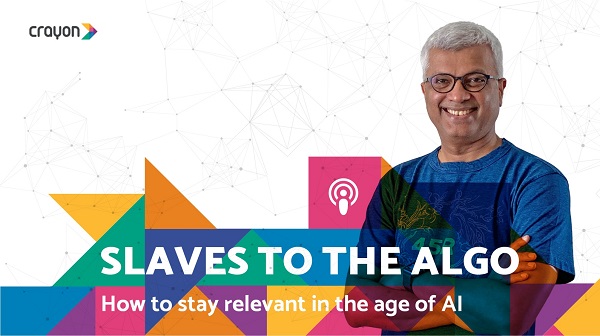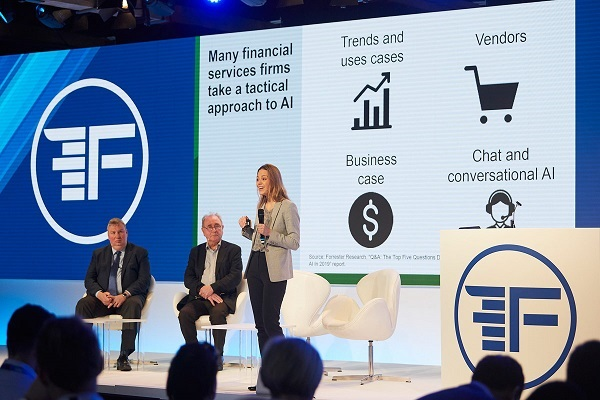I recently interviewed Arvind Sankaran, Global business leader. We talked about FinTech startups, innovation in the banking industry, big data analytics, and wealth management. He also shared about his experience working with banks like CITI, HSBC, and Barclays.
Read the complete interview below:

Manu: Can you tell us about yourself?
Arvind: I am a chemical engineer by training from Bits Pilani. After graduation, I spent a very interesting year as a trainee “grease monkey” at the ITC factory in Bangalore! Then I went on to do an MBA in finance at IIM Calcutta. Not many folks would know that I then spent a year at New York University pursuing a Ph.D. which I then dropped out of!
As a banker, I was fortunate to have opportunities over two decades to build and run businesses in branch banking, credit cards, lending and wealth management.
Stints at Citibank, Barclays and HSBC took me to five countries in Asia and EMEA which were fantastic professional and cultural experiences for my family and me.
Manu: Arvind, I understand one of your areas of expertise is in wealth management; you are a strategic advisor for banks in big data space. How did you get into big data?
Arvind: I actually spent time initially on the lending side of banking then I moved to wealth management in the last 12-15 years.
Very early on at Citibank, I was immersed in the use of Analytics. In the early to late 90’s, there was no big data, and primarily the risk community used analytics to create lending scorecards and strategies — I was very involved in that. Being an engineer by training, I was fascinated by analytics, statistics, and models.
In the early years of the new millennium, when I moved to wealth management, I found that analytics in this area was at a very rudimentary level to model the behaviour of the investor or the markets. The tools that were being used were static model-based and with low efficacy.
Big data and analytics have been intensively used in wealth management space only in the last five years or so. Both at Citibank and HSBC, where we used data-driven analytics, the modelling work done was largely driven off internal transaction data. But since then, the big data space has gained rapid sophistication with players like Crayon. The work Crayon Data does to bring external data sets to work for the enterprises is amazing in terms of what it can do for the Banking industry.
Manu: Can you tell us more about your role at Crayon Data? What excites you most about your work at Crayon?
Arvind: Last year, Suresh and I got talking about the exciting landscape for consumer brands in Asia, and in particular financial services which are being driven by growing affluence of the middle class, expanding lifestyle choices, and discretionary spend.
Before I knew it, I was completely taken in by the Crayon story. Maya’s product capability(product of Crayon) is something I had been searching high and low for years as a retail bank marketing and sales leader. And so here I am now as a strategic advisor to Crayon. What it means is that I’m very interested in making Crayon even more successful than it is today. What excites me very much?
Firstly, Crayon is operating at the cutting edge and is changing the way the marketplace and brands engage with consumers. I really like the vision that Crayon has set for itself – to solve the world’s problem of choice. That is BIG and BOLD!
Secondly, working with the young, smart, next generation of engineers and data scientists- bright sparks who are at the forefront of creating and delivering Crayon’s vision.
Thirdly, and I get a personal kick out of this! Now I am advising a venture that is disrupting and revolutionizing the way financial services are marketed, the very domain that I was a part of!
Manu: Your role at Crayon is that of a Strategic Advisor. Can you tell us more about your role as a strategic advisor, can you be more specific about your role?
Arvind: As a strategic advisor, there are a few things I bring to the table:
The first is, of course, subject matter expertise. For Crayon, winning in the banking vertical is critical; this is where I bring my immediate value add. I work with product and client delivery teams so that their product development work is laser-focused on client needs.
The second value I add is helping Crayon with its client-facing activities and in its effort to build a robust business pipeline. In the immediate term, that means focusing on as many wins for Maya Lifestyle(product of Crayon) with payment product businesses. I help open doors and put Crayon in front of key industry decision makers. Most of my banking career was in client-facing roles, so I love attending as many Crayon pitches as I can!
Third is to help Crayon with its fundraising activities. As you know, Crayon successfully closed CN2 and it has been a successful funding round. Through my years and network in the industry, I help bring strategic investors to participate in the future success of Crayon Data.
Manu: Now, let’s talk about changes in the industry. How has the financial services and insurance sectors in the APAC changed, with the advent of big data analytics?
Arvind: Firstly, I’d like to clarify that insurance players are very much a part of the financial services industry. The retail financial services industry is comprised of banking, asset management, insurance and brokerage with large local and global players competing in the Asian marketplace.
Coming to your question about how this sector is changing with the advent of big data. Until recent years, financial services firms had very limited understanding of their clients.
Big data was initially driven by internal data warehouse teams, who collected transactional data within the enterprise, and the models that were used were largely limited. As technology has advanced, memory became cheaper, the size of the data repository increased, and computing power quadrupled, financial services companies were able to deploy models and analytical capabilities that were massive.
With that, new insights were discovered that provided granular understanding of prospects, their choices, the way they consumed the financial products. And that has changed the way financial services companies create their market entry strategies, the way they build consumer products and large marketing campaigns. This has been simply transformational.
Yet, we are only scratching the surface, because where we are going with this, it is going to completely change the way financial brands engage with consumers. From a last-century approach of blunt segmentation, mass customisation of offers and communication channels out of sync with customer time and context, the future is all about ultra-personalisation of product offers, driven by sophisticated insights, through multiple proprietary algorithms and models that work off massive internal and external data sets, delivered through a device of choice in complete sync with customer time and context.
We’re witnessing the creative destruction of financial services, rearranging itself around the consumer. Whoever does this in the most relevant, exciting way using data and digital, wins!
Manu: Next, let’s talk Fintech. You know how Fintech start-ups are innovating more easily and rapidly compared with big banks. How can banks keep pace? Yes, their business models are complex, and they have very complicated systems – is it even possible for banks to replicate the agile innovation mindset of the Fintech startup?
Arvind: This question is what is keeping many banking leaders awake at night! In recent times, the economics of financial services industry has changed dramatically. Operational margins are down, the cost of acquiring and retaining staff is up, the cost of compliance is up, and technology is obsolete; as a result, profitability has significantly declined.
Banks are looking for efficient ways to deliver services to clients and in doing so, the traditional physical branch channels are beginning to be supplanted by a digital strategy. But this new agenda is moving slowly because of rigid structures and processes that don’t allow banks to act with agility.
So what banks are doing is to foster innovation within to break down internal barriers and drive this change. Internal innovation is however always a hard thing to do for a large enterprise.
The other option is to look at external innovation, partnering with fintech startups, who are small and agile. Every bank now has or is involved with a fintech bootcamp, incubator or accelerator- programmes that help plug into startups to work on ideas. Who are able to provide widgets and APIs delivering value to the bank, which is relatively low risk and of high impact in a short time.
As these startups- mobile payments, robo advisors, authentication, social lending etc..- begin to build things that are valuable, the banks are likely to take a stake, acquire them or get into long-term strategic alliances. I think this is the way the market is going to progress.
Manu: Next, there was an interesting study conducted by Millenial Deception Index. According to that, 53% of millennials don’t think their bank is any different from other banks. So, what do you think the banks can do to be more appealing to the next generation millennials, in terms of financial services, to be more attractive?
Arvind: This is something that is obviously going to be a make-or-break for banks. If you look at the skew of global demographics, you have many western societies ageing rapidly and the profile of the customer base there is largely the middle to older age set. They have a specific set of financial needs and they are probably not digital natives.
On the other hand, you have the emerging markets where the demographics is skewed towards the young. For example, if you take the Indian market, two-thirds of the population are under the age of 35 and that’s the same case when you look at any other emerging market like Indonesia. You’ll find that the millennials are a huge part of the demographic.
Any financial services player that wants to win in this marketplace has to go digital. If any bank wants to engage with this set, it needs to put a digital bank out there. Therefore, you see a lot of traditional banks who are building a “bank within a bank.” You have the larger bank, which is the traditional brick and mortar bank, serving consumer who wants high human interaction, physical touch, the familiar environment of a bank branch. The same bank is building a digi-bank within itself, serving the millennials. As they build this digibank, banks will have to work with partners and product providers who can dovetail into digibank platform. That’s where fintech partners will come into play.
Manu: Definitely. The kind of personalisation I get from an app like Paytm, for example, is not something I get from my bank. Apps like Oxygen Wallet make it so easy for me to shop online and are more appealing than banks.
Arvind: Absolutely. Some financial players like insurance companies have a bigger risk. Insurance companies have traditionally been dis-intermediated. Their products have always been delivered by an insurance agent or a bank sales representative.
As a result, they do not possess a deep level of understanding of their policyholders. To compound the situation, insurance is not a high contact product- a typical client meets the insurance agent or sales representative maybe once a year to talk about insurance and renewal of the policy. So, there’s also the risk of sparse data that is at the disposal of the insurance firm. They need to go digital very quickly to acquire data-driven insights and build that conversation directly with their end consumer. Otherwise, they are going to find themselves even more removed from the marketplace.
Manu: In 2014, there were approximately 40 billion debit card transactions at an average swipe fee of 31 cents each, equaling $12.4 billion in total.
How can financial institutions grow their share of this pie by winning more account holders through advocacy, they stand to reap tremendous profits?
Arvind: If you look at the traditional consumer wallet of payment products, credit cards have generally been preferred over debit. Credit card companies offer more attractive products propositions as well as promotions, on the back of relatively higher profit margins available to deploy into campaigns and benefits. Credit card transactions are also generally of a higher average ticket size, larger volume as compared to debit card bill transactions.
At the same time, debit card transactions originate from the savings or checking account of the banking customer. That pool of savings and checking balances is significantly larger than credit card limits and spend globally. As more young adults join the workforce, earn salaries and spend disposable income on discretionary lifestyle-driven items, expenses, debit cards are very well-positioned to be a payment product of choice. But the player that is going to capture a sizable share of this particular pool will need to intensively harness data-driven insights to be able to offer their debit card holders ultra-personalised choices that are time- and context-relevant.
Manu: Finally, to wrap things up, where do you see banking in the next 5 years? And in the next 20?
Arvind: There are many themes that are coming through. One is local vs. global. In the previous era, the global banks ruled; in the new era, it is likely to be the local banks that are going to rule. For example, in Asia from the 90’s till the first half of the new millennium, foreign banks like Citibank, StanC, HSBC, etc. pretty much owned the space of consumer banking innovation and service excellence. Whereas, if you see in the last 5-7 years, local banks like DBS and OCBC in Singapore, BCA in Indonesia, CIMB in Malaysia, HDFC and Yes Bank in India, they have all rapidly gained ground and are now relatively in very good position. With relatively robust balance sheets that were less affected by the GFC, global-standard infrastructure, and governance and build up of the strong talent pool, they are in a very good position to win the market going forward.
The second theme is that, physical vs. digital. Previously, we had the traditional brick & mortar, high human touch-centric delivery model. We are entering a digital omnichannel paradigm now.
Third is innovation – previously, innovation was incremental, largely process-centred; whereas, going forward, it is going to be rapid innovation, which is going to be partner-driven, where you have Fintech players co-create new ideas. All these are in the next 5 years.
In the coming 20 years, it is hard to crystal-gaze. It appears that politicians want to go back to where banking was at the turn-of-the-century! Serving a societal objective, serving the needs of the everyday consumer, safeguarding small savings…
We might see the industry morph into two ecosystems. One, which is a large utility-oriented industry serving the small saver, highly regulated; and another a niche industry not funded by the taxpayer, catering to the more sophisticated consumer. I think that there will, however, be a few secular drivers: digital, omnichannel, global, and big-data driven business actions.

5 steps to lifelong financial security
Money...





















